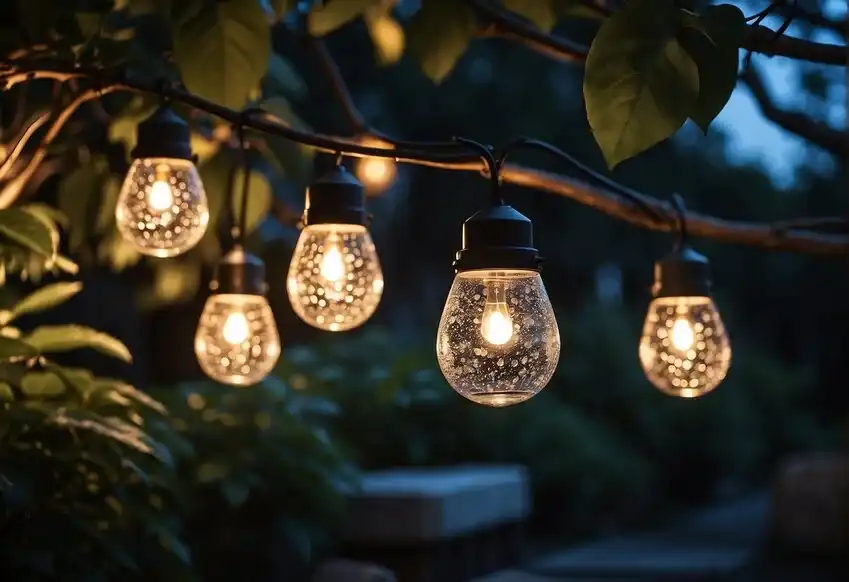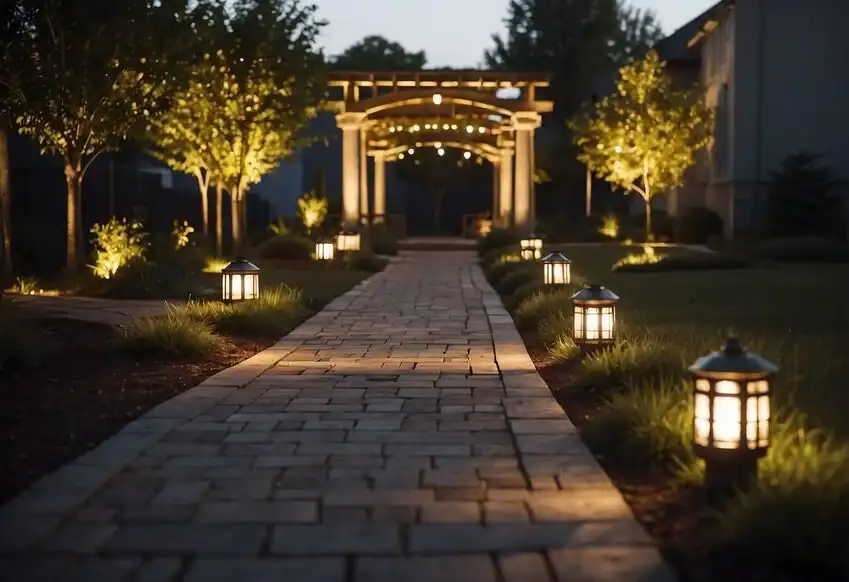Outdoor Lighting Solutions: Enhancing Beauty and Security

Outdoor lighting plays a important role in the functionality and aesthetics of exterior spaces. It enhances safety by illuminating walkways and discourages potential intruders by eliminating dark areas around buildings.
The choices in outdoor lighting fixtures range from basic floodlights to sophisticated, smart systems that can change color and brightness to suit various occasions.

The technology behind outdoor lighting has advanced significantly, leading to more energy-efficient options, such as LED lights. These advancements offer longer lifespans and lower energy consumption, which can lead to cost savings over time.
In addition to efficiency, modern outdoor lighting can contribute to the appearance of a space by highlighting landscaping features and architectural details.
Light pollution is a growing concern associated with outdoor lighting, prompting designers and homeowners to consider the impact of their lighting choices.
Effective outdoor lighting design balances the need for visibility and security with the desire to minimize light trespass and skyglow. As such, lighting strategies now often include fixtures with shields and opting for warmer colors that reduce blue light emissions.
Types of Outdoor Lighting

Outdoor lighting serves various purposes, from enhancing safety and security to accentuating landscape features. It is essential for homeowners to choose the right type of lighting based on their specific needs.
Pathway Lighting
Pathway lighting is essential for illuminating walkways, preventing accidents, and welcoming visitors. Typically, these are low-level lights placed along the sides of paths and walkways. Their designs range from functional to decorative, and common types include:
- Solar-powered stakes
- Low-voltage landscape lights
- LED path lights
Security Lighting
Security lighting deters intruders and increases the safety of outdoor areas. Key features of this lighting include high brightness and motion sensors. Types of security lighting commonly found are:
- Floodlights
- Wall-mounted lamps
- Motion-activated lights
Landscape Lighting
Landscape lighting accentuates outdoor features like trees, gardens, and architectural details. It’s designed to create an ambiance and highlight the best aspects of the yard. Options include:
- Spotlights
- Up-lights/Down-lights
- In-ground fixtures
Deck and Patio Lighting
Deck and patio lighting ensures these entertainment spaces can be used after dark and adds to the overall aesthetics of the area. This category includes:
- String lights
- Postcap lights
- Recessed deck lights
Design Considerations While Choosing Outdoor Lighting

Outdoor lighting design requires careful thought to enhance visibility, security, and aesthetics. The designer must consider how light interacts with the outdoor environment, along with the color, brightness, and style of fixtures.
Lighting Techniques
Outdoor lighting techniques vary depending on the purpose and location. For example, path lighting is employed to illuminate walkways and ensure safe passage, using fixtures spaced at regular intervals.
Spotlighting emphasizes architectural features or landscape elements, directing the viewer’s attention to focal points.
Color and Brightness
The color temperature and brightness of light affect both the functionality and the mood of a space. For general outdoor areas, a brightness range of 50-300 lumens is standard.
Choosing a color temperature like warm white (2700K to 3000K) can create a cozy ambiance, while cool white (3500K to 5000K) provides a more alert and focused atmosphere. You can choose a wide variety of outdoor lightings manufacturers at vorlane.com.
Fixtures Design
The design of outdoor lighting fixtures should be selected based on durability, weather resistance, and aesthetic alignment with the surrounding environment. Materials such as stainless steel or powder-coated aluminum offer longevity and stand up well to the elements.
Fixtures come in various shapes and sizes—from sleek, modern sconces to traditional lantern-style lights.
Energy Efficiency and Sustainability

Outdoor lighting advancements have made leaps in energy efficiency and sustainability, focusing on LED technology, solar power, and light pollution reduction.
LED Technology
LEDs, or Light Emitting Diodes, are a significant evolution in energy-efficient lighting technology. Compared to traditional incandescent bulbs, LEDs consume up to 75% less energy and can last 25 times longer. Moreover, they emit very little heat, which further enhances their efficiency and safety in outdoor settings.
Solar Powered Options
Outdoor lighting powered by solar energy has become increasingly viable. These systems harness sunlight during the day via photovoltaic cells and store it in batteries for nighttime use. One of the key benefits is their independence from the electrical grid, which reduces operational costs and carbon footprint.
Light Pollution Reduction
Measures to reduce light pollution are essential for sustainable outdoor lighting. It includes the use of full cutoff fixtures that direct light downward, minimizing the spill of light skyward or across property lines. This approach conserves energy and protects nocturnal ecosystems. Introducing adaptive lighting, which dims or turns off lights when not needed, also contributes significantly to this effort.
Installation and Maintenance
Proper installation and regular maintenance are crucial for ensuring the longevity and performance of outdoor lighting systems. This includes adhering to safety protocols during installation, routine cleaning, bulb replacement, and integrating smart technology for ease of use.
Wiring and Safety
- Wiring Practices: Ensure that all outdoor lighting fixtures and associated wiring comply with local electrical codes. Use ground fault circuit interrupters (GFCIs) for outlets to prevent electrical shock.
- Safety Measures: Turn off the power supply before beginning installation or maintenance tasks. It’s advisable to hire a licensed electrician for installation to guarantee safety and functionality.
Cleaning and Bulb Replacement
- Cleaning: Wipe down lighting fixtures regularly with a damp cloth to prevent dirt and debris buildup, which can diminish brightness.
- Bulb Replacement: Check fixtures periodically and replace bulbs as needed. Use long-lasting LED bulbs to decrease the frequency of replacements.
Smart Outdoor Lighting Systems
- Integration: Add smart controls to outdoor lighting for features such as dimming, color change, and scheduling.
- Upkeep: Update software regularly and check connectivity to ensure the system operates effectively.
Regulations and Safety Standards
Outdoor lighting must comply with various regulations and safety standards to ensure proper installation and use. These regulations are vital to prevent electrical hazards, environmental impact, and ensure durability against weather conditions.
Electrical Codes
Electrical codes are stringent safety standards designed to ensure that outdoor lighting systems are installed correctly to prevent electrical hazards. Commonly accepted standards include the National Electrical Code (NEC), which outlines requirements for electrical wiring and equipment. It requires that:
- Outdoor lighting must be on dedicated circuits with proper grounding.
- Wiring must be suitable for outdoor use and protected from potential damage.
Weather Resistance Ratings
Weather resistance ratings, such as the Ingress Protection (IP) rating system, classify the degree of protection provided by enclosures of electrical equipment. Outdoor lighting fixtures typically require:
- A minimum rating of IP65 to prevent dust entry and to protect against water jets.
- IP67 or higher for fixtures in locations prone to temporary immersion or flooding.
Dark Sky Compliance
Dark Sky compliance aims to reduce light pollution and its harmful effects on wildlife and the environment. Fixtures must:
- Minimize upward light spillage to protect the night sky.
- Be International Dark-Sky Association (IDA) approved fixtures, which often include shielded designs to direct light downward.

